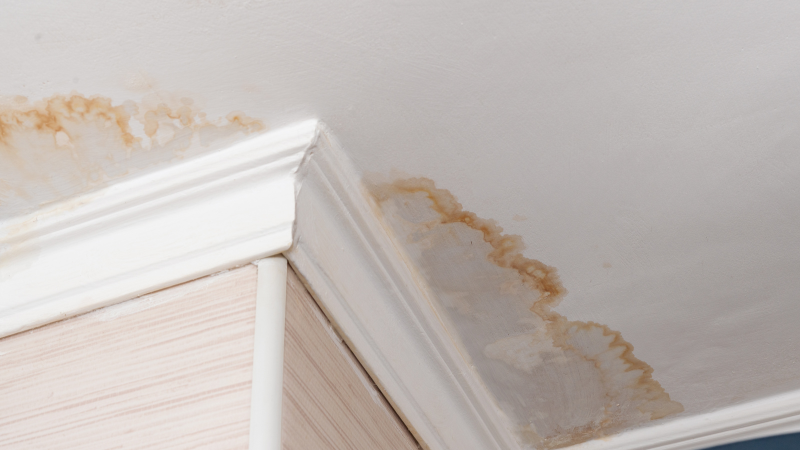Stopping Water Damage in the Bathroom
Stopping Water Damage in the Bathroom
Blog Article
The content in the next paragraphs pertaining to How to Fix a Water Damage Bathroom is fairly informative. You should give it a look.

The bathroom is incredibly prone for wet accumulation as well as possible water damages due to the frequent use water in it. This write-up offers simple evaluation strategies to aid spotting water damage dangers.
The constant use of water in the restroom makes it very prone for wet buildup and potential water damage. By checking it frequently, you can minimize water associated damages.
The complying with set of evaluations is simple to carry out as well as ought to be done once in every three months in order to keep your bathroom in good shape and also to stop possible water problems brought on by the tub, the shower, pipeline joints as well as plumbing, sinks, cupboards, and the toilet
Do not neglect performing these examinations as well as be extensive while doing them. Keep in mind that these straightforward assessments can conserve you a lot of money by giving very early indicators for water damage
Bathtub and Shower
The shower and also bath tub need special focus and also upkeep. Check the tiles and also change if broken. Make sure that there is no missing out on cement between the floor tiles. Examine and also change fractured caulking at joints where the walls meet the flooring or the bathtub. Obstructed drains and also pipes troubles will protect against the tub from drying and also may indicate significant issues beneath the bath tub. Talk to a professional quickly to avoid architectural damage. Pay attention to discolorations or soft locations around the tub wall surfaces as they may show an internal leakage.
Plumbing
Signs for water damage are difficult to detect considering that the majority of pipes are mounted inside the walls.
Pay unique attention to flooring and walls wetness as well as spots as they may indicate an undetectable plumbing problem. Check wetness degrees in adjoining spaces too.
Sinks and Cabinets
Sinks and also cabinets are subjected to dampness and moisture daily as well as are often overlooked. Check regularly under the sink and on the counter top over it. Fix any kind of drip in the trap as it may recommend drainpipe troubles. Look around the sink, slow draining pipelines might indicate a blocked drain. Change sink seals if they are fractured or loose.
The Bathroom
The bathroom is an at risk water junction. Check the water lines as well as look for leakages around the commode seat, in the hose, and under the water storage tank. If you find any kind of indicators of wetness on the flooring around the toilet, check for leakages in the toilet edge and storage tank seals.
Know that hanging commode bowl deodorants boosts the opportunities for clogs.
Water Damage Signs In The Bathroom To Avoid Cleanup
Musty smell
This is one of the easiest signs to catch because musty smells are so odorous. The damp, earthy, moldy smell should be a big red flag. The smell will develop when moisture gets trapped in surfaces, and begins to facilitate mold growth. Leaking pipes under cabinets, inside walls, and behind shower fixtures will cause moisture to stay trapped and not dry, which will lead to mold growth and spread. As soon as you notice any musty smells in your bathroom, have it checked for hidden water damage and cleanup signs.
Visible mold
If the smell isn’t there to give it away, sometimes you will actually see mold growth. Finding mold in your bathroom is a serious problem, because mold is very harmful to your health. By the time mold growth is visible, it also means that water damage has already occurred and been present for some time. The only way the mold problem can be resolved is to find the source of the moisture and get it stopped. To safely and adequately remove mold, you need to have professionals handle the remediation. Do not waste any time in getting mold problems addressed, fixed, and sanitized so that you can protect you and your family from the many respiratory symptoms caused by mold exposure.
Damaged floors
Bathroom floors should be able to withstand some exposure to water while still remaining in good condition. However, when excess exposure or water leaks occur, they will begin to damage even the most water-resistant flooring. If you notice any cracking, bubbling, staining, or warping on your bathroom floors, there is probably a water leak somewhere causing the distortion. If you notice areas of the floor have become softer, or even have a spongy feeling, there is probably damage to the subfloor. Subflooring is typically made up of plywood. When plywood is exposed to water or moisture, it will absorb it. Once it has become saturated, the weight of the excess water will cause the wood to swell and soften. Check the floors in your bathroom frequently to catch any of these sings before they lead to damaged subflooring.
Changes on walls
When water leaks behind walls, it will cause changes in the drywall. Peeling plaster, blistering paint, and soggy wallpaper are all good indicators that excess water is building up behind the wall. Water leaking behind drywall will cause it to swell and be soft to the tough. If you start to notice gaps along the trim of your walls, or where tile meets the wall, it could also be a strong indicator that there is a leak behind the wall. Any changes, distortion, or damage on the walls should be evaluated as soon as you notice it to prevent further water damage and cleanup.

As a reader about Looking for Signs of Water Damage in the Bathroom, I imagined sharing that portion was worth the trouble. Sharing is caring. Helping others is fun. Thank you so much for going through it.
Get Your Estimate Now Report this page